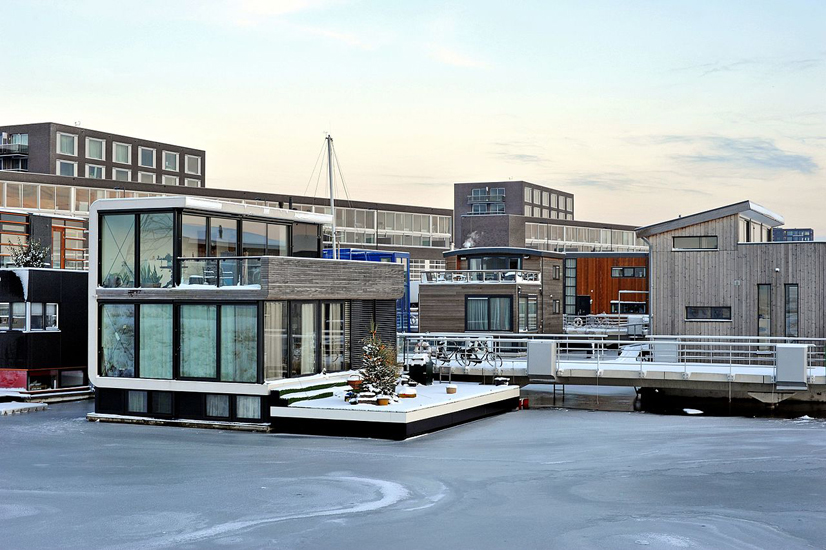The Ijburg district is a new modern district in Amsterdam ( Netherlands ), it was built on several artificial islands on Lake Eimer, here, due to a lack of housing in Amsterdam, they decided to build floating houses on the water, which are moored at the docks like boats, the project is still underway under construction but many houses are already inhabited.
As two-thirds of the country’s population lives below sea level, and Amsterdam is even on the list of cities that could disappear under water, and houses on the water are also a solution to the problem of rising sea levels and the housing crisis in dense areas of cities with suburbs.
A revolutionary project called “IJburg” to expand the city has already begun. It is planned to build artificial islands with a total area of 15 sq. km, on which 18 thousand new houses will be placed, 150 of which will be floating houses. It will be the largest settlement on the water, and the history of the Netherlands did not know this at all, because all 45 thousand residents of the area will live above sea level.
The beginning of construction began in 1996 and now more than 20 thousand people already live here, construction is still ongoing and by the end of construction, 18 thousand houses for 45 thousand residents will “float” here.
Dutch architects believe that 150 floating houses are just a starting point for the creation of large multi-family wonboats with parks and even floating skyscrapers.
Access : Coordinates: 52.355, 4.997778 / The district is connected by the Amsterdam tram through line 26. This line goes to Amsterdam Central Station, the other terminal is on the island of Haveneiland and is to be continued to Strandeiland.
Line 66 of GVB and line 359 of Connexxion also operate on IJburg. / IJburg is connected to the mainland to the west and east by bridges. For pedestrians and cyclists there is also a path to the southwest via Diemerpark and the sweeping Nescio Bridge over the Amsterdam-Rhine Canal.
Highlights :
- Waterbuurt is part of the IJburg area, built on artificial islands. The houses are on floating concrete floating platforms submerged in water. They have a steel frame, but are made of light wood. Design features make it possible to expand the usable area.
- The houseboats are supported by the buoyancy of concrete vats, submerged in water to a depth of half the story. A lightweight steel structure support is built on top, which is fitted with wood paneling to make rooms and floors.
- The houses were built at a shipyard about 65 km north of Lake IJ, and then pulled though the canal locks, which means that the houses cannot exceed a width of more than 6.5 meters. To make sure that the houses do not drift away or into each other, they anchor you at the bottom of the lake with steel mooring poles.
- When the ambitious project is finally completed, 18,000 houses will be built for 45,000 residents, as well as schools, shops, restaurants and entertainment centers
- Today the largest floating building in the history of the Netherlands is an office building with 38 rooms. Its total area is 650 sq. m, and weight 600 tons. This houseboat perfectly reflects the construction trends of a city that has no free land left.
- IJburg divided in four districts: Haveneiland, Rieteilanden, Steigereiland and Zeeburgereiland, which have been raised from the lake.
Activities : sightseeing / Photography, Architecture Photography / Architecture tour in Amsterdam / biking.
Go next : Nearby (in the south) is the largest nature and city park in Amsterdam, the Diemerpark.

